The post What skews and distorts suburb crime statistics appeared first on RedSuburbs.
]]>If you are looking for a safe and peaceful place to live, you might be interested in checking out the crime statistics of different suburbs. However, not all statistics are accurate, and some suburbs have more crimes reported than they actually have. Why is that? In this blog post, we will explore some of the factors that can skew and distort the crime statistics of suburbs, and how Red Suburbs – Crime Map of Australia website handles them.
One of the factors that can inflate the crime rate of a suburb is the presence of shopping malls. Shopping malls attract a lot of visitors from other areas, and some of them may engage in shoplifting or other petty crimes. These crimes are reported in the suburb where the mall is located, even though they are not committed by the residents. Similarly, bottle shops can attract shady people who may cause trouble or violence in the vicinity. These factors can make a suburb seem more dangerous than it really is.
Another factor that can affect the crime statistics of a suburb is the location of certain institutions that report crime in bulk. For example, police stations, hospitals and state transport departments may report crimes that occurred in different areas under their jurisdiction, but they are counted as part of the suburb where they are based. This can create a false impression that the suburb has a high crime rate, when in fact it is just a reporting hub for other places.
A third factor that can influence the crime statistics of a suburb is the amount of infrastructure that it has. Some suburbs have low population density but a lot of roads, bridges, tunnels and other facilities that are used by people from other areas. These infrastructures can increase the chances of traffic violations, such as speeding, running red lights or driving under the influence. These violations are considered crimes and are reported in the suburb where they occurred, even though they are not related to the quality of life of the residents.
How does Red Suburbs handle these skewed and distorted suburbs? We use a sophisticated algorithm that identifies and puts a rank cap on such suburbs. This means that we do not rank them higher than they deserve based on their actual crime rate. We also provide detailed information about each suburb, such as its population, area and types of crimes reported. This way, you can analyse each suburb in depth and think about what factors can affect its crime statistics and drive its numbers up.
Red Suburbs tries to provide you with the most accurate and reliable crime map of Australia, but we also encourage you to use your own judgement and common sense when looking at the statistics. Not all suburbs are equal, and some may have more crimes reported than they actually have. By knowing what skews and distorts the crime statistics of suburbs, you can make a better decision about where to live or visit.
The post What skews and distorts suburb crime statistics appeared first on RedSuburbs.
]]>The post The 37 Best Free Property Research Tools [2022] appeared first on RedSuburbs.
]]>You don’t need every free Property Research tool under the sun. You just need enough of them to cover your use cases.
Categories:
Property Search
1. RealEstate.com.au
Find and filter houses or apartments by suburb or on a map.
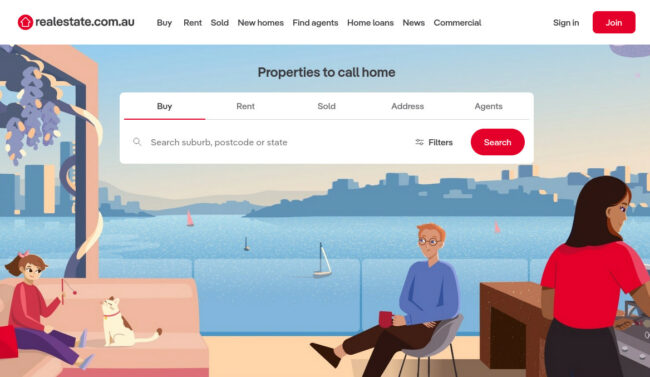
RealEstate.com.au is Australia’s largest and most popular property search website. You can find most property listings on it. While best used for property search it has some basic research tools.
Suburb Profiles can give a quick overview before deeper research. Address Search can give minimal information about a specific property and its history.
2. Domain.com.au
Find and filter houses or apartments by suburb or on a map.

Domain.com.au is the second-largest property search website in Australia. It works very like its competitor RealEstate.com.au but may have fewer property listings.
Like RealEstate.com.au it also has basic property research tools.
3. RealEstateView.com.au
Search and filter rare properties, and get their high-quality valuations.

RealEstateView.com.au is the third largest property website in Australia. It has fewer features than RealEstate.com.au or Domain.com.au. With a focus on areas missed by other top property search sites, it also has good research tools.
4. AllHomes.com.au
Notice! This is ACT focused resource.
Search and filter properties in ACT and the rest of Australia.
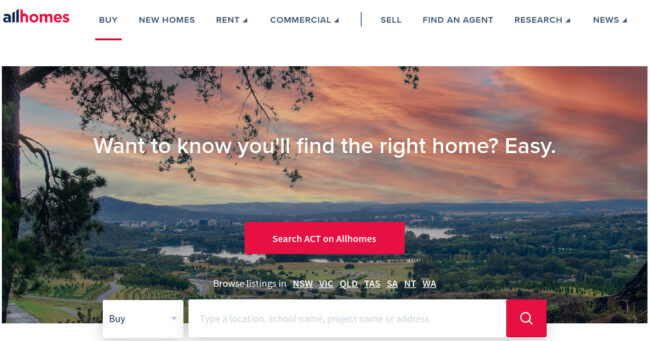
AllHomes.com.au is a #1 property search website in ACT and has most of its services focused on that region. While you can search properties in other states too, the results would be coming from Domain.com.au. Why? Because these websites belong to the same company.
5. RealCommercial.com.au
Search and filter commercial property by region or on a map.

RealCommercial.com.au is the Australian most popular commercial real estate search website. It allows searching for properties to buy, lease or invest in. Other features are short-term office or event spaces and a high-quality news section.
RealCommercial.com.au has the same owners as RealEstate.com.au and shares part of its services.
6. Commercial Real Estate
Search for commercial property, business, or franchise.
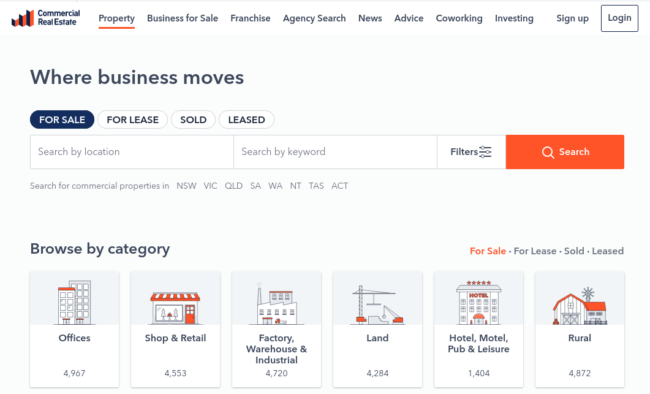
Commercial Real Estate has most services of RealCommercial.com.au and some more. You can buy, lease or invest in commercial property and find office or event space there. What’s more, you can buy an entire business or a franchise. Ever wanted your own Guzman Y Gomez?
Commercial Real Estate belongs to the same owners as Domain.com.au and shares some of its services.
7. Sothebuy’s International Realty
Buy or sell a mansion, island, and other rare luxury property.

Sotheby’s International Realty lets you search for various luxury real estate. It is not Australia only, so prices are actually in US$. Here you can find unique places like castles, mansions, and whole islands.
Most places have ‘Price Upon Request’ but some have a public price. You might find some of the places on common search sites, but Sotheby’s focused on a luxury audience.
8. Urban.com.au
Notice! This is VIC focused resource.
Search for future and ongoing development projects.
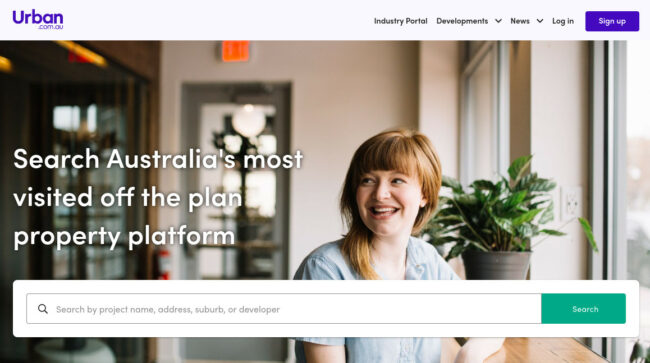
Urban.com.au is a great place to look for off-the-plan or not yet built properties. It is currently a Victoria-only resource. It has advanced search and filtering features, not only by location but also by the developer.
If you’d like to get onto the property as early as possible then this is your platform. You can find detailed property plans and also receive construction updates. All needed details to buy into it at the best moment.
9. Residz
Search properties, find unique properties, and download a free property report.
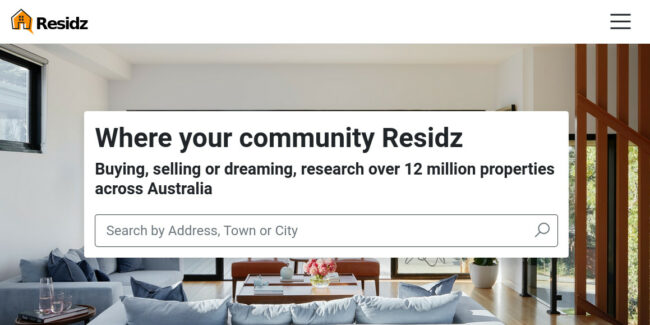
Residz is a rather small property search website when we compare it to the big 3. To compensate for its smaller size Residz offers some unique features. Free property research, internet connection check, bushfire risk, and flood risk are some.
You can see area crime stats as well, though they are a few years old. There are many more features, though the website feels less polished than the top 3.
10. SaleByHomeOwner.com.au
Search and filter properties listed by their owners.

SaleByHomeOwner.com.au allows property owners to list, sell, and rent without commission. Needless to say that it is very different to negotiate with an agent or with an owner when you buy.
All these properties would be on the top 3 sites but would take extra effort to find. When the owner doesn’t need to pay a commission, there is a better chance to negotiate a lower price.
11. Commercial Property Guide
Search and filter commercial property, read monthly guide.
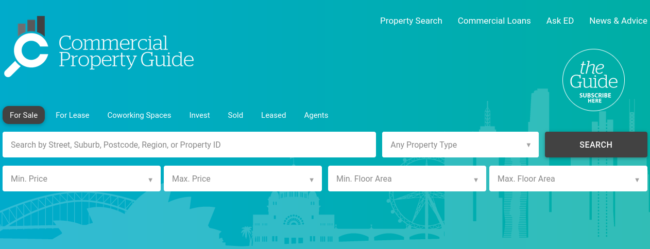
Commercial Property Guide is Australia’s number one independent commercial real estate website. The keyword is – independent, which means it doesn’t belong to RealEstate.com.au or Domain.com.au. How much value in it is for you to decide.
All standard features are present and work very fast, so let’s look at what makes it special. Commercial Property Guide is a guide that you can receive by email monthly. Also, there is a large Experts Directory that might help you find the right person for the job.
Financial Indicators
12. YIP – Suburb Profiles
Find financial information on every suburb in Australia.
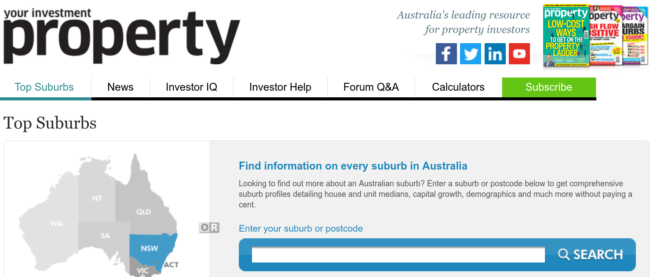
Your Investment Property magazine provides profiles with financial stats for all Australian suburbs. It also shows the top 10 suburbs for every state and territory.
Provided data sourced from CoreLogic and DSR Data. It is usually outdated by a few months at least. The data is in a simple and concise format of charts and tables.
13. OnTheHouse.com.au
Suburb financial profiles with median rent and rental yield data.
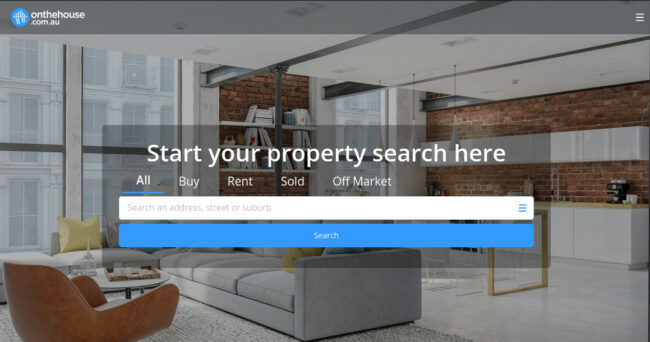
OnTheHouse.com.au allows you to search for properties, but their real value is in suburb profiles. Their free property research tools give simple financial and demographic overview. This high-level overview can help to decide on a suburb before diving deep.
14. SQM Research
Sold records, auction results, asking prices, vacancy rates.
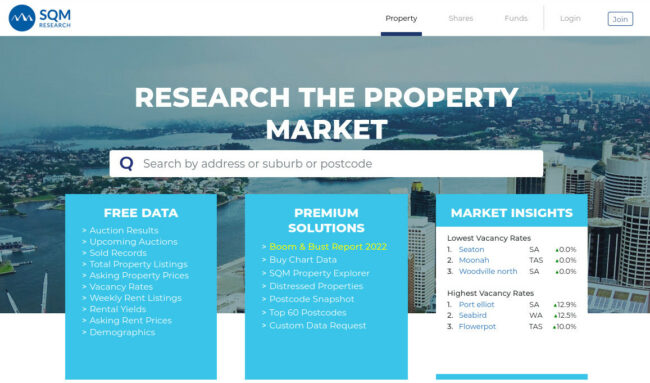
SQM Research is a gold mine of free property research tools and some paid tools & services as well. Some graphs visualise large data sets of 10 or even 25 years.
You can find household income, rental vacancy and rental yield graphs. And this is only a small subset of data available for free!
Notice! This resource also provides paid tools & services.
15. DSR Data
Demand supply ratio score number and explanation.
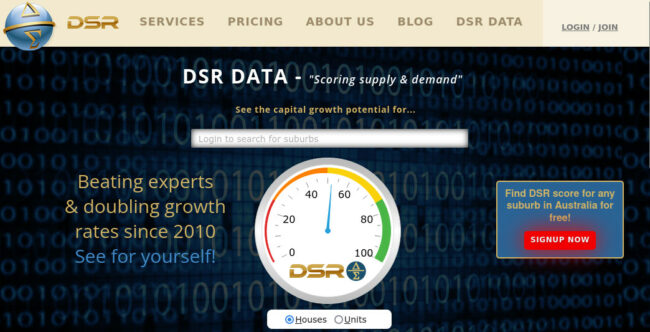
DSR Data provides you with the Demand to Supply Ratio, a predictor of capital growth potential. You need a free account to see DSR for specific suburbs. There are many more research tools but they need a paid subscription.
Notice! This resource also provides paid tools & services.
16. Suburb Trends
Detailed suburb financial and demographics data with a text summary.

Suburb Trends has a wealth of information on it and dozens of region reports. The feature to highlight though is its Suburb Map with detailed suburb profiles.
With the usual data view, it also presents a plain text summary that can be easier to understand for some people. It also has unique features: building approvals, elevation and demographic profiles.
17. HomeOn
Notice! This is Sydney focused resource.
Sydney suburb financial and demographic profiles with map view.

While many of HomeOn features need payment, the free suburb reports are full of useful data. It has a useful map view to compare nearby suburbs. The main issue is that it is available for Sydney only.
Notice! This resource also provides paid tools & services.
18. Heatmaps.com.au
See and compare financial indicators by post-code as a heatmap.
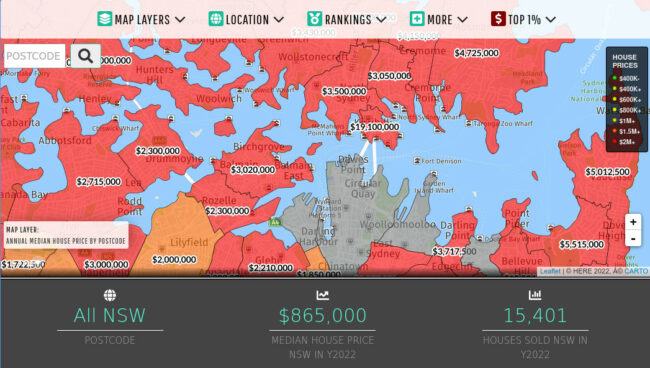
Heatmaps.com.au is an amazing free property research tool that is not very well known. It allows displaying different financial indicators on a heat map. That visual approach makes it very easy to compare and navigate. The data is on a post-code level, so it often includes more than one suburb.
Heatmaps has non-financial data layers as well, but they are basic or region-specific. For example, you can see crime stats for NSW only. And best – it is completely free!
Suburb profiles and demographics
19. Census Quick Stats
Search census demographic quick stats or download community profile.
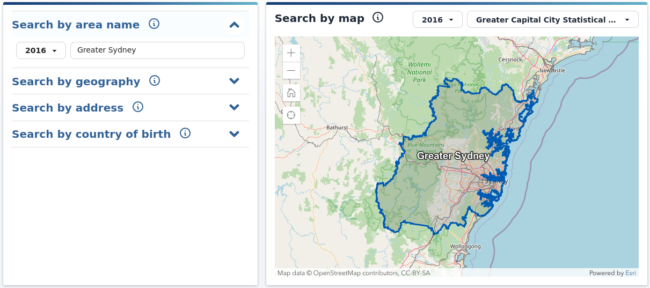
Australian census data is a reliable and detailed research tool for demographic information. Recently updated with 2021 census data it is as fresh as it could be.
The data is full of valuable insights about different size regions. You can always drill down by downloading the community profile into Excel.
20. .id
Quality demographic information based on census and research.
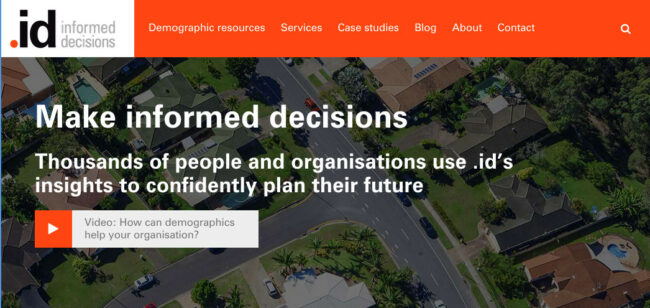
“.id” provides free detailed LGA community, economics and other profiles. Their data comes from the ABS census and their own research. With some tools requiring a login the large set of profiles is available for free.
Even more data services and property tools are available to a paid user. Though for most purposes free data provided by “.id” is enough.
Notice! This resource also provides paid tools & services.
21. Homely
Suburb reviews and ratings.
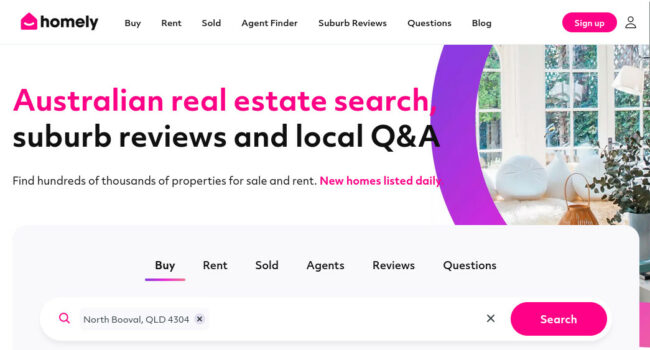
Homely has suburb reviews and ratings from the local population. It also has a Q&A section for a lot of suburbs and cities helpful in property research. Be aware that some reviews are by local agents distorting accuracy. Also, people are often tended to leave a review when they are unhappy, not the other way around.
22. REIWA
Notice! This is Perth & WA focused resource.
Perth & WA Real Estate research and search.
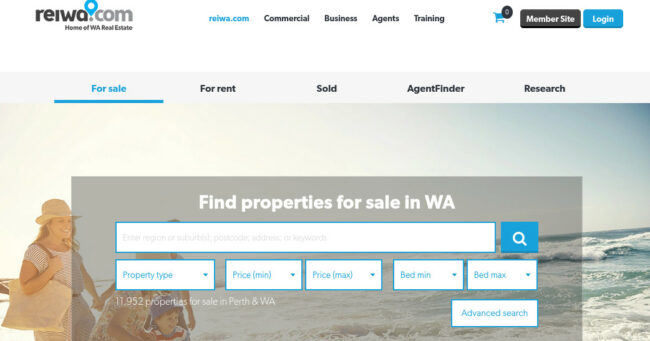
REIWA is a great property research tool if you research Perth or WA. You can see local market snapshots or explore detailed WA suburb profiles. There are Interactive Maps and WA-specific property calculators. And if that’s not enough, you can get a free property report by address.
23. Property Value
Property value and suburb profiles.
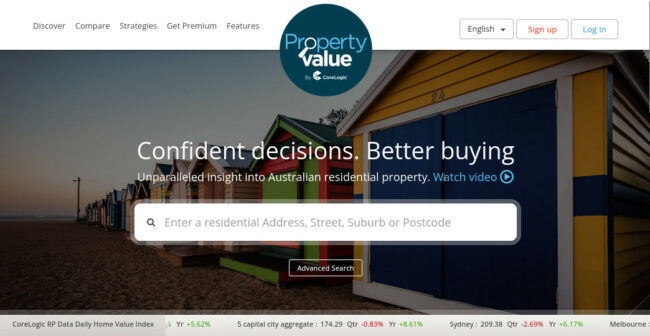
Property Value provides some basic property and suburb profiles for free. Most extra data requires paid access, but what is free has great value. Some general research tools also include – the state of the nation and top suburbs by state.
Property Value belongs to CoreLogic and is powered by their data.
Notice! This resource also provides paid tools & services.
24. Microburbs
Free info-rich demographic suburb reports.
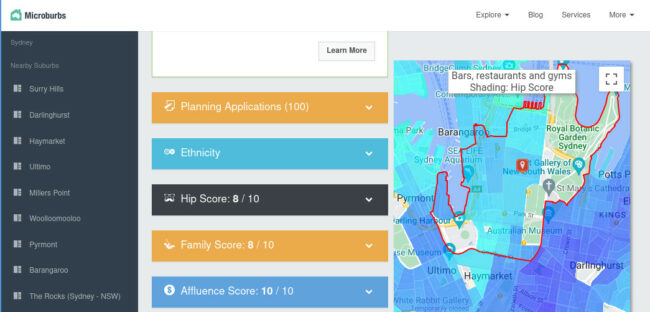
Microburbs was an amazing property research tool. As of today though most of its data is obsolete and dates to at least 2016.
If this doesn’t scare you Microburbs provides the most comprehensive suburbs overview. Ethnicity, family score, hip score and many other values are available as table and map views. Maybe the 2021 census will bring Microburbs a long-needed update.
Notice! This resource provides outdated data.
Crime profiles
25. Crime Map of Australia
Suburb crime profiles and map.
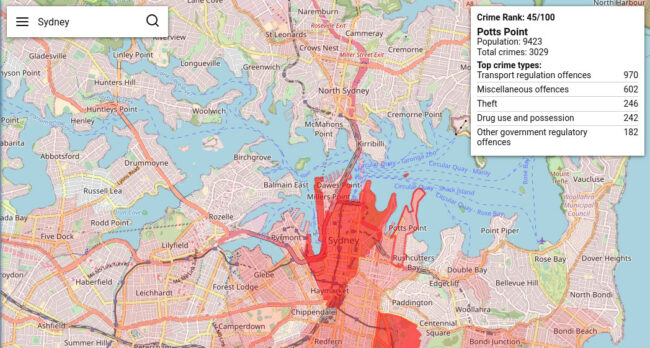
Red Suburbs provides crime stats for 85% of the Australian population. You can see individual suburb crime profiles with table and chart view.
Every suburb has a Crime Rank and also you can see the crime rank of neighbouring suburbs. Map view makes it easy to identify regions with high crime.
26. Regional Crime Data
Every region has its own crime data portal.
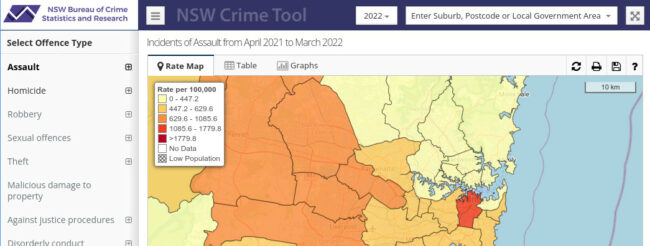
Suburb traits
27. Walk Score
Check if the suburb is easy to walk around and what is available within walkable distance.
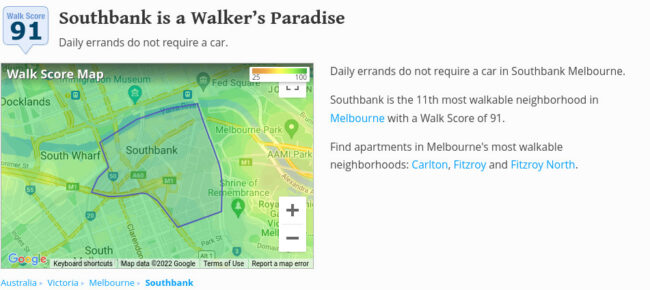
WalkScore.com ranks cities and neighbourhoods by how walkable they are. Also, you can see in plain words how walkable is the area and if you’d need a car for it.
Another feature is a heat map of restaurants within a walkable distance. For bigger suburbs, you can also see a word cloud of important terms that can help in your property research.
28. Labour Market Insights
Insights into local labour market from National Skills Comission.

Labour Market Insights provides a high-level overview of the labour market and its segments. It is also an invaluable source of information about unemployment.
Some of the data is from the 2016 census, some are more recent. We can expect a big overhaul when the 2021 census data becomes available. You can download unemployment data about areas smaller than LGA.
29. IRSAD Rating
How advantaged or disadvantaged is the suburb?
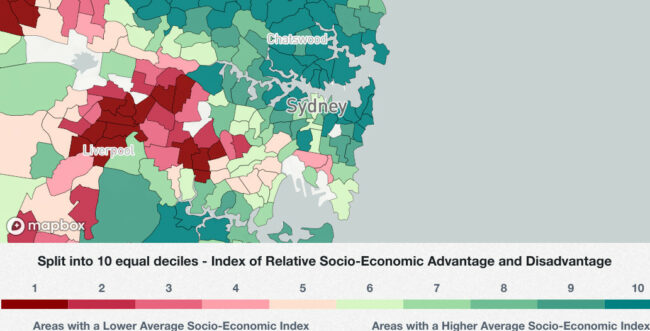
IRSAD stands for Index of Relative Socioeconomic Advantage and Disadvantaged. Created by SBS based on 2011 census data, the tool helps to understand which areas are better off and which aren’t.
2011 census data is obsolete now, but the rating still is a good indicator of suburb prosperity.
Sale and Rent history
30. SoldPrice
Australia property sales and rent data.
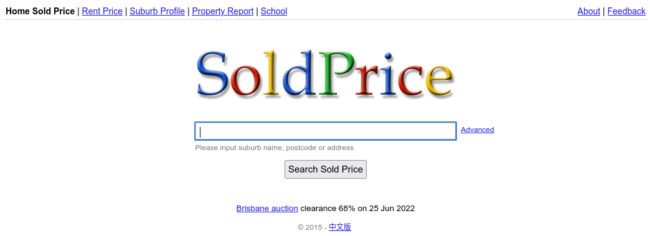
Targeted at Chinese-speaking investors the English version of SoldPrice is as good. You can search sold and rent prices by suburb, postcode or address.
Another useful feature is the school search and their rating. The website doesn’t feel very polished but provides a wealth of data.
31. Au House Prices
Sales and auction results data.
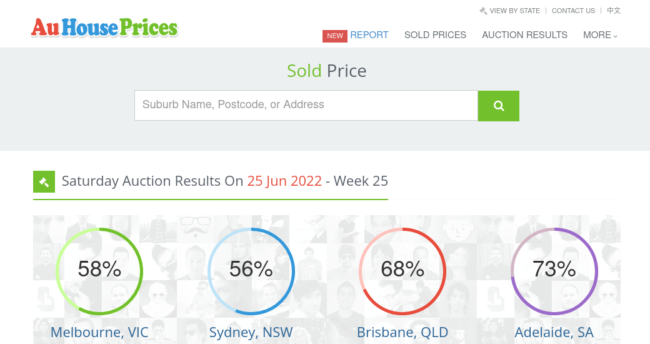
Au House Prices has many usual features like property search and suburb profiles. The main value of it comes from sales, auctions and rent history.
It is not always up to date for every suburb, but the amount of historical data is impressive. You can see recent auctions by states and suburbs.
32. OldListings
Suburb reports, Sale and rental history.

Old Listings is very like Sold Price and Au House Prices. Advantages would be a clear interface and very detailed financial reports for suburbs. You can find both sales and rental history there.
Every price point has a link to the website it is from. Wide range of graphs about sales, rent and yield help with suburb research.
Land and Zone information
33. Planning Alerts
Find out what is being built and knocked down in the area and receive email alerts.
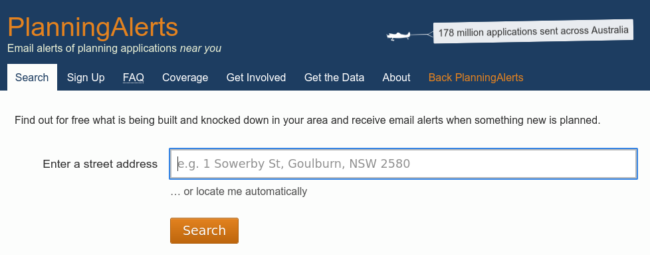
Planning Alerts allows you to see and track construction projects in the area. You can select the radius for the area and frequency of alerts.
While it wouldn’t work for every area, it is invaluable for developing dense suburbs. You can find planning info on other websites too, but Planning Alerts allows you to set up an email alert.
34. Find Lot Size
Measure land area or distance using a map.
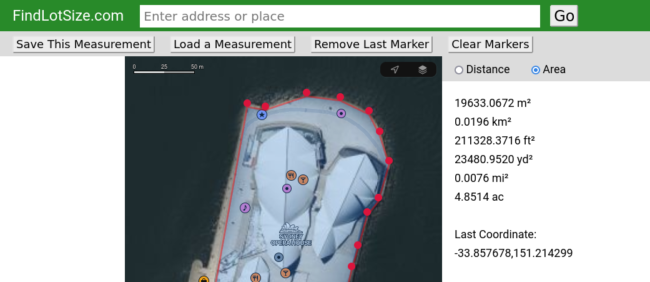
Find Lot Size is not an Australia-specific resource and doesn’t have a huge database behind it. It allows you to zoom into any area on the map and set up boundaries on it.
After the boundaries are set you get an area size in square meters. This might be not as accurate as other sources, but can be the next best alternative.
35. Land Checker
See detailed land and zone information in one place.
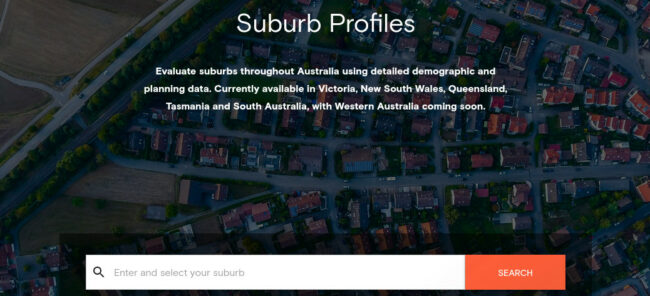
Land Checker allows you to check for land info by the address of the property. You can even get a free report. One of the most valuable features is the ability to see planning zones on a map.
Be aware though that some of the features aren’t free. On some occasions though there are workarounds. You can’t see the land size in search results for free but can see it in a free property report.
Notice! This resource also provides paid tools & services.
36. Queensland Globe
Notice! This is QLD focused resource.
See official government data on the interactive map.
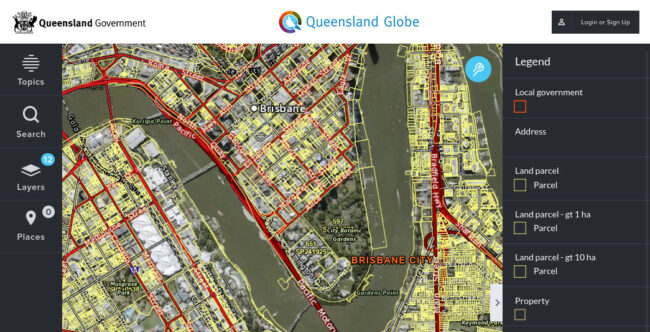
Queensland Globe is a useful research tool from the QLD government with official data. It allows you to see various datasets with configurable layers.
Topics of interest that you can check are land valuations and property information. There are many more layers with various data, that you can customise within your account.
Other tools
37. Google Street View
Walk around in suburbs you researching.

Google Street View is not a property dedicated tool but can save you hours or even days. Visiting every suburb of interest or making a drive-by of a house can be hard or even impossible in fast pace market.
Street View allows you to do research from the comfort of your own home with rich map data in hand.
Notable paid tools
1. CoreLogic
Software and data powerhouse behind huge share of services.

CoreLogic is a platform behind many paid and free property research tools. Even more, 3rd party services use them as their primary or secondary data source.
It is hard to imagine the Australian property tools market without CoreLogic behind it.
2. APM Price Finder
Professional price finding service.

PriceFinder is a property history and research tool aimed at industry professionals. It is a high-quality tool, but you definitely can find some of its functionality in free tools.
3. Real Estate Investar
Property investment and data platform.

Real Estate Investar has a lot of free educational content that can help in your journey. None of their property research tools is available for free, though many clients use their paid solutions.
4. HtAG
Real Estate analytics and investment platform.
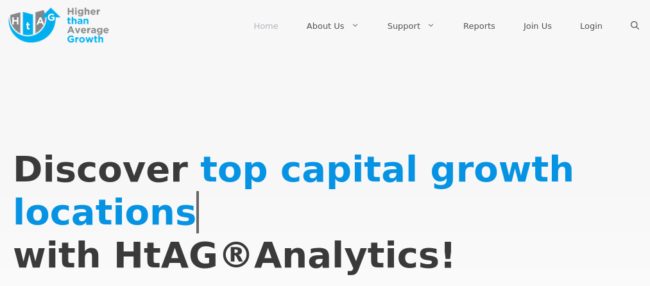
HtAG is a real-estate platform that helps to find locations for investment properties. They aim to provide easy to use tools and dashboard to analyse the market and manage a portfolio.
Anything I Missed?
So those are the Best Property Research tools based on my research.
And now I’d like to hear from you:
Are there any tools that you love… but didn’t see on this list?
Or maybe you have a question.
Either way, let me know by leaving a comment below right now.
The post The 37 Best Free Property Research Tools [2022] appeared first on RedSuburbs.
]]>